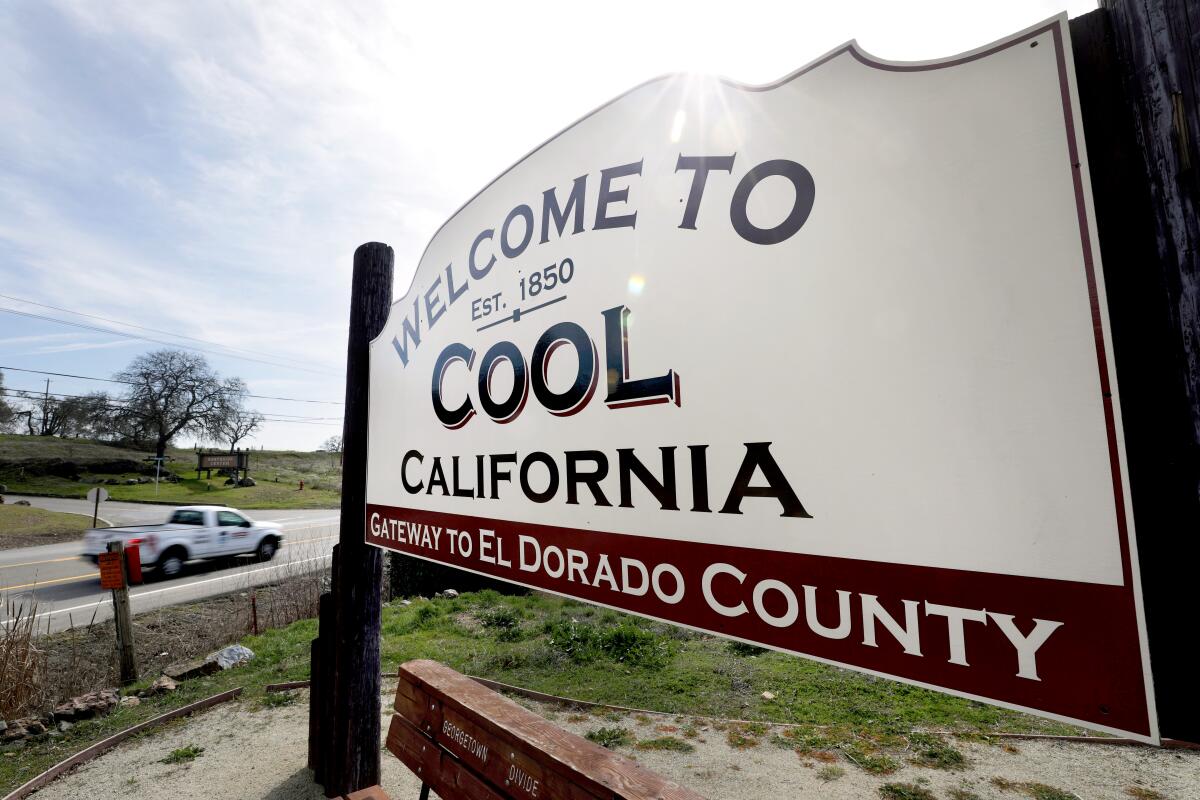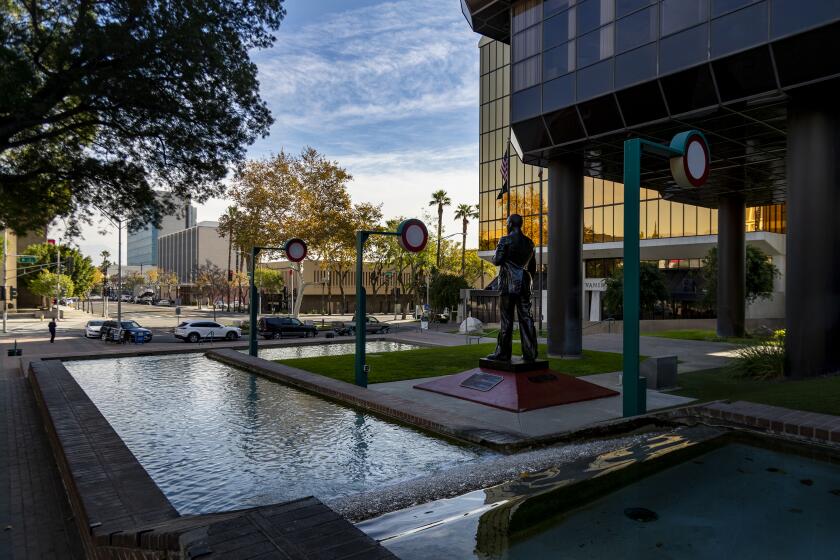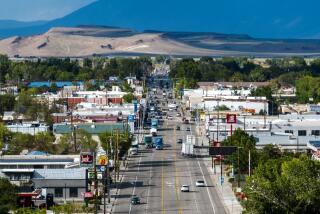The latest effort to break away from California is brewing in El Dorado County

- Share via
It’s a decades-old pursuit that’s been attempted, thus far, unsuccessfully — but a group of El Dorado County residents are hoping to finally get their shot at breaking free from California.
The new effort to separate from one of the largest states in the U.S. is brewing in one of its smallest counties. Located east of Sacramento, El Dorado County is home to fewer than 200,000 residents but includes such picturesque spots as south Lake Tahoe.
“We all knew that our problem was representation, living in Northern California,” said Sharon Durst, who is garnering support for El Dorado County to become its own state. “We don’t have a voice. We don’t have one representative — state or federal government — that lives in the border of El Dorado County.”
Durst, 84, recently formed the Republic of El Dorado State group, which is working to collect signatures of support for their movement to see the county secede from California — ideally, without the approval of elected leaders in Sacramento. Durst’s is an unusual plan for a campaign that’s become almost cyclical over the years, with different factions and regions pursuing sovereignty — but one that law experts say doesn’t include the necessary legal footing to succeed.
There have been more than 200 recorded attempts over the years to either break off from California or simply break up the Golden State, including recent ones by more conservative or rural regions. Officials in San Bernardino County — the largest county by geographic size — are studying the idea of seceding after voters requested the review last year; in 2018, a ballot measure — later deemed unconstitutional — was aimed at splitting California into three states; and other groups over the years have tried to divide the state into two parts or break off a section of Northern California.
That last effort, which became known as the state of Jefferson movement, was one Durst found herself drawn to in 2015, joining the fight for 21 Northern California counties to separate from the state.
When that didn’t work, Durst said she was ready to give up and simply enjoy her retirement — until she hatched her latest idea. She believes there’s a way to use the U.S. Constitution and California history to directly appeal to Congress for El Dorado County’s secession — bypassing lawmakers in Sacramento who have routinely shut down such efforts.
“We think we have grounds to stand on the fact that El Dorado was actually a county before California was a state,” Durst said. In a dissertation-like defense of her position, Durst details why she believes El Dorado County deserves to be its own state.
“It is impossible to believe that the men who wrote the Declaration of Independence would be of a mind to hold a people hostage to an oppressive state any more than an oppressive King,” Durst wrote in the piece, which was posted on Substack last month.
Instead of focusing on the section in the U.S. Constitution that requires both congressional and state legislature approval to change any state’s borders, Durst claims that as a designated county before joining California in 1850, El Dorado County could be considered under the purview of Congress as “other property.”
San Bernardino County voters narrowly approved a measure directing officials to review how to secure more resources and funding — “up to and including secession from the State of California.”
That reasoning, though, lacks legal standing, said Jon Michaels, a UCLA law professor who focuses on constitutional law. He pointed out that being a county before statehood — which is the case for much of the East Coast and many other regions — doesn’t alter the legitimacy of the state.
Changing any state’s boundaries, per the Constitution, requires the approval of Congress and the state Legislature, no matter the grievances, Michaels said.
“It’s kind of one of these things that’s like cathartic, maybe a symbolic thing,” Michaels said, “but there’s really nothing that could ever happen with this.”
But Durst said the group’s effort has already gained more support than she expected, especially so quickly. She first presented the plan in a May 24 meeting at a community hall, and it was picked up in the Mountain Democrat.
“It spread like wildfire, much to my surprise,” Durst said. She said she and a small team started collecting signatures Thursday, with a goal of getting at least 60% of El Dorado County’s registered voters — about 80,000 people — a threshold that will decide if they can move forward with presenting their plan to Congress.
“I have always thought that California was too big and too diverse to be one state,” Durst said. “I’m so excited and thrilled by what has happened ... and we just [got] set up.”
More to Read
Sign up for Essential California
The most important California stories and recommendations in your inbox every morning.
You may occasionally receive promotional content from the Los Angeles Times.













